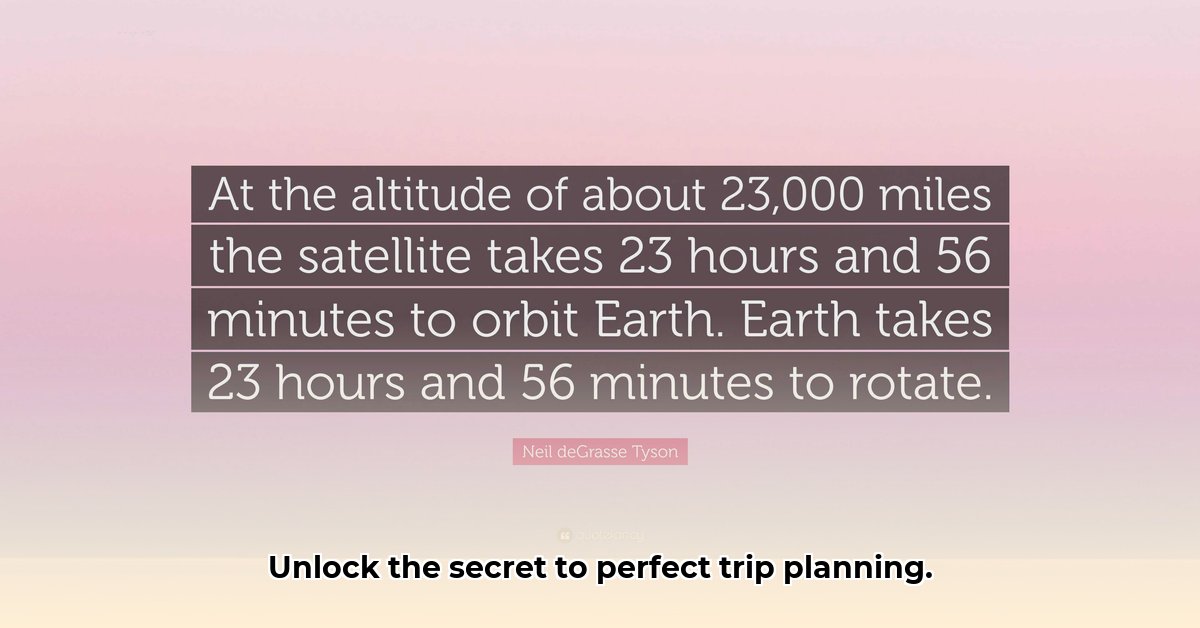
Ever been late because your GPS lied? We've all been there. Estimating travel time for a 23-mile trip seems simple – just divide distance by speed, right? Wrong. This article explains why simple calculations often fail, particularly for shorter distances. We'll explore the limitations of quick estimates, compare online trip planners, and provide practical tips for more accurate travel time predictions.
Beyond Simple Math: Why Basic Calculations Fall Short
The basic formula (distance ÷ speed = time) is a good starting point, but it falls dramatically short for real-world travel. This simplistic approach ignores crucial factors that significantly impact travel time, especially for shorter distances where minor delays have a larger proportional impact. For a 23-mile trip, a few extra minutes can easily turn a punctual arrival into a late one.
Online Travel Time Tools: A More Sophisticated Approach
Several online tools and apps offer more sophisticated travel time estimations. These tools often incorporate historical traffic patterns and sometimes even real-time data to generate more realistic predictions. However, like simple calculations, they are not without flaws.
| Tool Type | Pros | Cons |
|---|---|---|
| Basic Distance/Speed Calculator | Simple, quick, requires minimal information | Ignores real-world conditions; wildly inaccurate for most trips |
| Advanced Online Travel Time Estimators (Google Maps, Waze, etc.) | Considers historical and often real-time traffic data, alternative routes | Still susceptible to unexpected events; data might be outdated or incomplete; accuracy varies greatly depending on location and data quality. |
While these tools offer improvement over simple calculations, they are not perfect. Unexpected events will always influence actual travel times.
Real-World Roadblocks: Unexpected Delays that Add Up
Numerous factors influence travel time, many beyond our control. Traffic congestion, particularly during peak hours, is a major culprit. Construction, accidents, and severe weather can all significantly impact travel time. Furthermore, unplanned stops—needing gas, grabbing coffee, or dealing with a detour—add up quickly. These unforeseen circumstances routinely render simple calculations unreliable.
Actionable Strategies for Accurate Estimation
Follow these steps to improve your travel time estimations:
- Utilize Online Tools: Start with a reputable online tool like Google Maps or Waze. These usually incorporate real-time traffic data.
- Implement a Buffer: Always add extra time! A 10-20% buffer is a solid starting point to account for unforeseen delays. For a 23-mile trip, this could mean adding an extra 2-5 minutes.
- Check Real-Time Traffic: Before leaving, use a real-time traffic app to check for current conditions. This allows you to adjust your estimated time based on current delays.
- Know Your Route: Familiarize yourself with your route to anticipate potential congestion areas.
- Consider Weather Conditions: Account for the impact of weather on your travel time. Rain, snow, or extreme heat can all add to travel duration.
The Future of Travel Time Prediction: AI and Beyond
The future of travel time prediction involves AI and machine learning. These systems process massive amounts of data, including real-time traffic, weather, and historical patterns, to create increasingly accurate predictions. This advancement will not only benefit individual travelers but also improve urban planning and traffic management.
Conclusion: Mastering the Art of Travel Time Estimation
Accurate travel time estimation is more complex than a simple distance-speed calculation. Understanding and accounting for real-world factors, combined with using online tools and implementing buffer time, will significantly increase the accuracy of your predictions. While perfect prediction remains elusive, a more nuanced approach will help you arrive on time, more often.